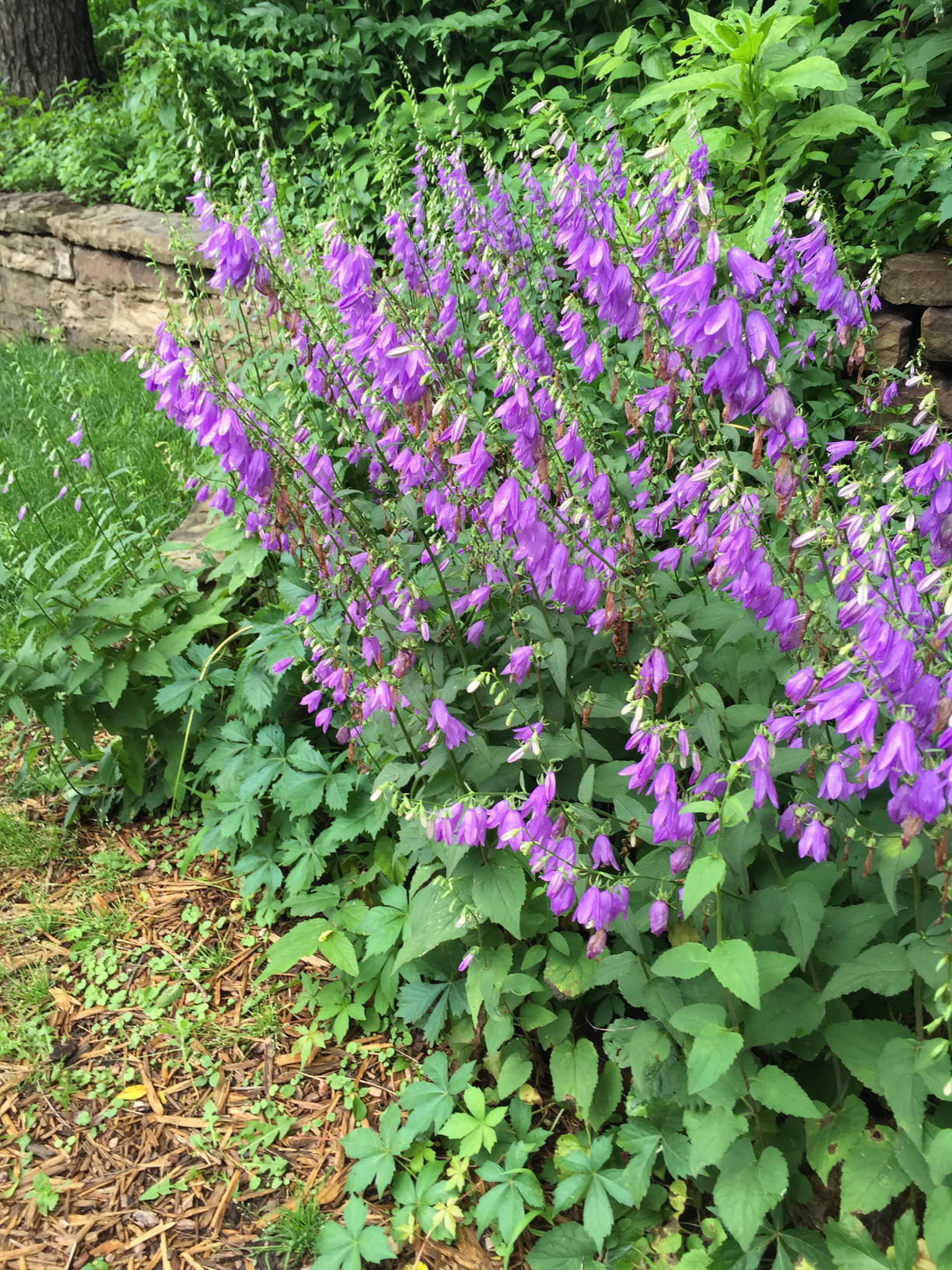Resource Library
Plant of the Week: Campanula rapunculoides, Creeping Bellflower
FAYETTEVILLE, Ark. -- To be socially correct and good citizens of the garden world we should never plant invasive plants. To most people “invasive plants” are equated to “non-native” but in the garden many invasive plants hail from our own fields and forests. Creeping bellflower (Campanula rapunculoides) has been labeled invasive but it seems to me aggressive is a better term.

Creeping bellflower is one of about 500 species of bellflowers native throughout the northern hemisphere. This species is native to northern Europe and Siberia where it grows in grassy meadows. It is an herbaceous perennial spreading by underground rhizomes produced from a stout taproot shaped tuber.
Stems are about 30 inches tall, tightly spaced across the ground with inch long purple-blue bell shaped flowers produced in late spring and early summer. The flowers are typically borne down one side of the raceme. The basal leaves are triangular while the leaves produced on the spike like inflorescence are narrow and willow like.
Creeping bellflower is not really in the nursery trade though it must have been at one time. Now it is spread as a pass-along plant. In the North Country where campanulas do best it is aggressive and spreads by both thuggish root expansion (think bamboo) and by seed. Here in the South, spread seems to be limited to root expansion.
I first learned the plant by its doppelganger name Adenophora confusa or ladybells. The two species are almost identical in outward appearance, differing only in the shape of the immature ovary and the fact that ladybells hail from East Asia. It turns out that most ladybells sold in the nursery trade are actually bellflowers.
In Arkansas I don’t think the term “invasive” is correct for creeping bellflower but “aggressive” certainly applies. In the small, highly manicured perennial border with rich soil creeping bellflower would be a poor fit because once it starts spreading it is almost impossible to dig out because each, even tiny, broken root piece can potentially start a new plant.
I’ve got several “invasive” plants in my garden – Vinca and Pachysandra to name two – but I love them. They do just what I planted them for, they cover the ground. If they spread too far I have the option of ripping them out once they pass my no-go line, but till then they serve as a nice green foil in the shady garden space. Where I have seen creeping bellflower used most effectively has been the edges of gardens where you want something growing but space is available and some flower color is better than no flower color.
Creeping bellflower is best suited to good, moist sites with bright conditions but still some afternoon shade. It is not the easiest plant to establish in droughty conditions, but once it catches it should persist. If spread is a concern, plant it in a location where the borders can be controlled by weed-whacking stems that spread beyond the boundaries that have been established.
For more information about horticulture, or to see other Plant of the Week columns, visit extension’s website,http://uaex.uada.edu/yard-garden/resource-library/plant-week/or contact your county extension agent.
Pursuant to 7 CFR § 15.3, the University of Arkansas System Division of Agriculture offers all its Extension and Research programs and services (including employment) without regard to race, color, sex, national origin, religion, age, disability, marital or veteran status, genetic information, sexual preference, pregnancy or any other legally protected status, and is an equal opportunity institution.
By: Gerald Klingaman, retired
Retired Extension Horticulturist - Ornamentals
Extension News - June 5, 2015
For more information about horticulture contact your county extension agent.
Pursuant to 7 CFR § 15.3, the University of Arkansas System Division of Agriculture offers all its Extension and Research programs and services (including employment) without regard to race, color, sex, national origin, religion, age, disability, marital or veteran status, genetic information, sexual preference, pregnancy or any other legally protected status, and is an equal opportunity institution.